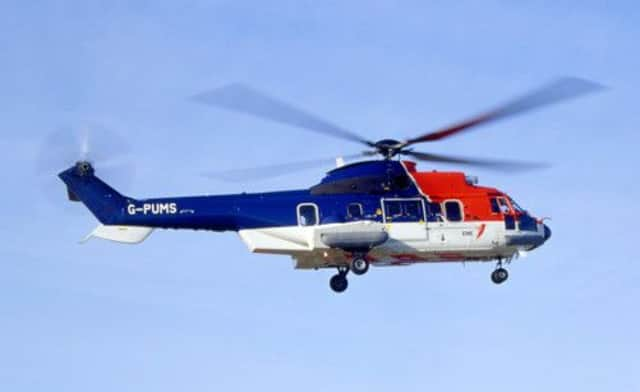Leaders: Super Puma inquiry must be thorough


The combined voice and flight data recorder will now be taken to the Air Accidents Investigation Branch headquarters at Farnborough for analysis.
The AAIB said the helicopter, which had been making a normal approach to Sumburgh airport until some three miles from the shore, had appeared to show a “reduction in airspeed accompanied by an increased rate of descent”, and that it appeared to be intact and upright when it entered the water.
Advertisement
Hide AdAdvertisement
Hide AdHow and why did it suffer such a sudden loss of power? At this early stage no firm statements can be made to identify a cause of the crash. Aberdeen North MP Frank Doran has called for a full-scale Piper-Alpha-style public inquiry. This call is fully understandable. It is a matter of great concern to the oil industry, to all who work on offshore North Sea oil installations, and to his constituents that a thorough inquiry is held, particularly in the light of the unfortunate series of four previous helicopter accidents.
However, a Piper-Alpha-style inquiry would take a very considerable period to set up, to undertake its inquiries and to publish its conclusions – a procedure that would almost certainly take years to complete. But there is an evident need for an early assessment and for answers to the most pressing questions to be provided with the minimum of delay.
What is required here is an immediate inquiry and technical assessment on this particular incident by the AAIB to be completed and published as soon as possible, and for a wider investigation as soon as practicable thereafter to explore what may link this latest tragedy to previous incidents involving Super Puma helicopters. While it may be argued that only one of the four previous occasions resulted in loss of life and that these helicopters have undertaken thousands of flights without incident, it is imperative that such a wider inquiry should be undertaken and its conclusions published before full passenger confidence can be restored. This investigation should be undertaken with despatch and should not require the length of time it took for the Piper Alpha inquiry to be completed. This inquiry, into the worst offshore oil disaster in terms of lives lost, began its work in November 1988, four months after the disaster. It involved 180 days of proceedings and did not finally report until November 1990 – almost two and a half years after the fatal explosion.
An inquiry into the problems with the Super Puma helicopters should not require two years before important conclusions are reached. The North Sea oil industry and its offshore employees are entitled to expect a thorough investigation but in this case the most important aspect is that it is done absolutely thoroughly but also as soon as possible.
Bellany’s legacy will endure
Three elements mark the work of the artist John Bellany. The first is a rich and unflagging imagination. The second is boldness in the use of colour. And the third is an energy that seems to resonate from every corner of the canvas.
To this extent, no canvas was ever too big for an artist with such boldness, or one too small for his keen attention to detail. It could fairly be said that each painting was greater than the sum of its parts. The small and the local he enriched. Little wonder that his work depicting Scottish fishing village life can be found in galleries around the world. He was able to transcend the boundaries of period and convention. And for someone who eschewed the reigning fashion for abstract work in his formative period of the 1960s, he was able to speak in the most modern way and work in a manner that attracted a universal appeal. These qualities
resonated through his work.
His death at the age of 71 followed a tumultuous life with more than its fair share of dark periods and sadness. It was therefore all the more heartening that his commitment to art helped him to pull through, to transcend these trials and enable him to enjoy a serenity in his final years.
He has been and will continue to be a huge asset to Scotland and has added in no small part to our country’s reputation for greatness in the arts around the globe.
Advertisement
Hide AdAdvertisement
Hide AdThe quality of his work was recognised with the award of the CBE in 1994 and his death has brought forth fitting tributes, from leading figures in the arts community and from Scotland’s First Minister. While we mourn his passing, we have the consolation of a rich, vivid and vibrant collection of work he has left behind and which will endure.